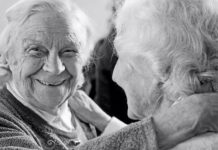Riva Lehrer and I are the same age and grew up only three miles apart in Cincinnati. Yet our school experiences differed greatly.
“When our school bus went down the street, people often would scream at us,” said 55-year-old Lehrer, now of Chicago, Illinois. “It didn’t happen every day, but there were areas where it would get nasty and people would throw eggs or rocks and scream ‘retard.’ While riding through certain parts of Cincinnati, we knew to duck below the window line.”
Lehrer attended Randall J. Condon School for Crippled Children, or Condon School. She and 250 classmates mostly had orthopedic or neurological disabilities, though some were blind or deaf. Even though the school had a standard academic curriculum, many people thought students there had intellectual disabilities.
Her school experience included students from a neighboring elementary school regularly throwing rocks and calling her and others “freak,” “retard” or “cripple.” A substitute teacher once said her class members had disabilities because their parents had been horrible sinners. A few times while Lehrer was out in public, strangers placed their hands on her to “cast out the devil” and heal her.
She said, “When leaving Condon (in the ’70s), I felt so much shame (for being a person with a disability) in the outside world. I had been so happy at Condon and was so miserable away.” At Condon School, students had choir, Boy Scouts and Girl Scouts, softball, a school newspaper, plays, dances, and an art club.
Currently, Lehrer is writing a book in part about Condon School and searching for people to interview. The school closed in 1982. Besides being a writer, Lehrer is an internationally known artist, a medical humanities instructor at Northwestern University, a professor at School of the Art Institute of Chicago, and an art curator.
Lehrer was born with spina bifida, which is a neural tube condition involving the incomplete development of the spine early in pregnancy. Today, Lehrer has some paralysis and gait difficulties.
She said, “As an artist, I’m known mostly for doing narrative portraits of people with disabilities and was one of the first artists in the ’90s to take on disability directly as a cultural identity.”
She advised people with disabilities to become more involved at any level in a “thriving disability culture” that included art, literature, music, festivals, politics, and academics.
(21+ years strong)
Welcome to the brighter side!
Get in front of local customers! 24/7 (365)





















